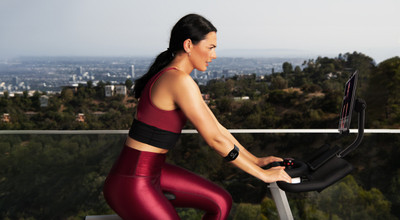
Pilates and the Cyclist
Posted by Spinning® on Dec 2nd 2020
If you’re an advocate of Pilates exercise, you may already know how beneficial Pilates can be as a cross-training tool. The exercises increase core strength and stability and provide overall flexibility, which can lead to improved performance on the bike. If your core is stable, your body can devote most of its energy and power to your legs. Additionally, if your flexibility improves, your risk of injury is lower and your body can recruit the proper muscle groups more efficiently.
The biggest change for cyclists and Spinning® instructors after incorporating Pilates is in the approach to posture on the bike. Many people don’t think about how their bodies are positioned on the bike and instead focus on being able to “power” up hills and “sprint” past opponents. Pilates can teach you to align and to move efficiently and consciously with new body awareness.
This new awareness can help us assess posture while on the stationary bike in Spinning® class. We often forget about proper posture and alignment during our daily living. We slouch, hunch our shoulders and reach our heads forward while driving our cars. We carry many of the same bad body mechanics over into our workouts. Look around your next Spinning® class and you will see these body patterns begin to appear, especially as the participant begins to fatigue. In a Pilates class, alignment is crucial to the proper execution of the exercises. Joseph Pilates believed that “the mind controls the body,” and therefore all Pilates exercises incorporate proper alignment with movement. Of course, there are times in both Spinning® and Pilates classes where you fall out of alignment. But what is most important is that we give our participants the tools to create that awareness, so even if they fall out of alignment, they know how to bring themselves back.
Use this list of Pilates concepts in your Spinning® class to help emphasize proper posture and, in turn, cycling efficiency:
Beginning the alignment from the feet and ending with the head, cue your participants to check their alignment often, especially when they are in standing positions or working hard in the seated position.
- Make sure to press through the big toe and ball of the foot as you pedal. Keep the knee and second toe aligned.
- Sit with your “sits bones” evenly placed on the saddle and maintain this position while pedaling in a seated position.
- Draw your ribcage in line with your pelvis and engage your abdomen muscles.
- In hand position one or two, be sure to keep your shoulders away from your ears and down your back.
- Reach long through the crown of your head.
These cues are the first step to incorporating some Pilates concepts into your Spinning® program. The more you learn about Pilates exercise, the more you will see how the exercises can be used to help condition the body for many types of sports and activities.
